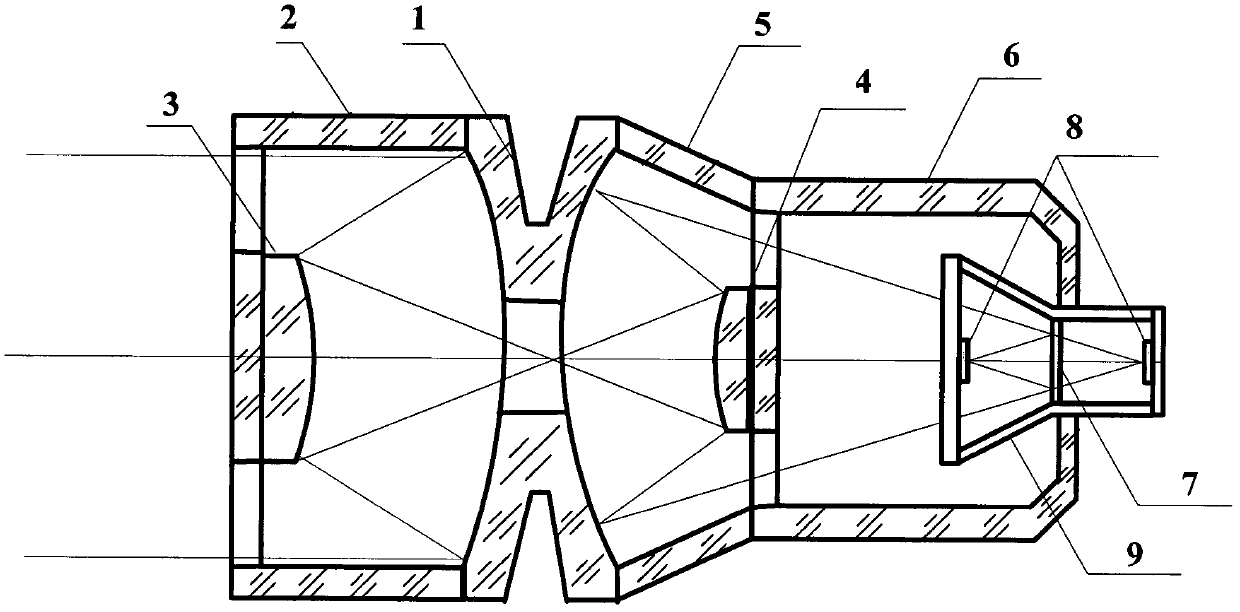Microcrystalline low-temperature lens and camera using same
A low-temperature, microcrystalline technology, applied in the field of low-temperature lenses, can solve problems that cannot be completely eliminated, and achieve the effects of simple and practical system design, avoiding changes, and simple working principles
- Summary
- Abstract
- Description
- Claims
- Application Information
AI Technical Summary
Problems solved by technology
Method used
Image
Examples
Embodiment
[0034] The working spectrum of the all-microcrystalline lens is B1: 5.0~7.6μm, B2: 8.2~12.0μm, entrance pupil diameter: 300mm, F number 1.5, effective field of view is 4°; detector B1 spectrum and B2 spectrum pixels The size is 30μm area array CCD. The primary mirror / four mirrors (1) are concave hyperboloid mirrors, the secondary mirror (3) is convex hyperboloid mirrors, and the third mirror (4) is a convex spherical mirror.
[0035] The working environment temperature for processing, assembly and testing is 293K, and the working environment temperature is 120K.
[0036] In this embodiment, when the temperature drops from 293K to 120K, the deformation of each mirror surface of the all-microcrystalline cryogenic lens is as Figure 2a~2d As shown, the deformation of each mirror surface is symmetrical.
[0037] In this embodiment, the pixel energy concentration of the B1 and B2 spectrum bands of the all-microcrystalline cryogenic lens under 293K and 120K working conditions is as follow...
PUM
 Login to View More
Login to View More Abstract
Description
Claims
Application Information
 Login to View More
Login to View More - R&D Engineer
- R&D Manager
- IP Professional
- Industry Leading Data Capabilities
- Powerful AI technology
- Patent DNA Extraction
Browse by: Latest US Patents, China's latest patents, Technical Efficacy Thesaurus, Application Domain, Technology Topic, Popular Technical Reports.
© 2024 PatSnap. All rights reserved.Legal|Privacy policy|Modern Slavery Act Transparency Statement|Sitemap|About US| Contact US: help@patsnap.com










